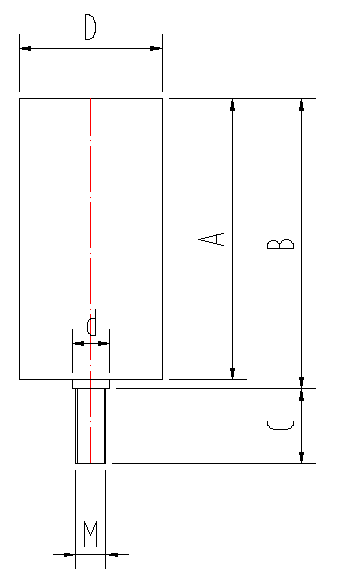 Afrikaans
Afrikaans  Albanian
Albanian  Amharic
Amharic  Arabic
Arabic  Armenian
Armenian  Azerbaijani
Azerbaijani  Basque
Basque  Belarusian
Belarusian  Bengali
Bengali  Bosnian
Bosnian  Bulgarian
Bulgarian  Catalan
Catalan  Cebuano
Cebuano  Corsican
Corsican  Croatian
Croatian  Czech
Czech  Danish
Danish  Dutch
Dutch  English
English  Esperanto
Esperanto  Estonian
Estonian  Finnish
Finnish  French
French  Frisian
Frisian  Galician
Galician  Georgian
Georgian  German
German  Greek
Greek  Gujarati
Gujarati  Haitian Creole
Haitian Creole  hausa
hausa  hawaiian
hawaiian  Hebrew
Hebrew  Hindi
Hindi  Miao
Miao  Hungarian
Hungarian  Icelandic
Icelandic  igbo
igbo  Indonesian
Indonesian  irish
irish  Italian
Italian  Japanese
Japanese  Javanese
Javanese  Kannada
Kannada  kazakh
kazakh  Khmer
Khmer  Rwandese
Rwandese  Korean
Korean  Kurdish
Kurdish  Kyrgyz
Kyrgyz  Lao
Lao  Latin
Latin  Latvian
Latvian  Lithuanian
Lithuanian  Luxembourgish
Luxembourgish  Macedonian
Macedonian  Malgashi
Malgashi  Malay
Malay  Malayalam
Malayalam  Maltese
Maltese  Maori
Maori  Marathi
Marathi  Mongolian
Mongolian  Myanmar
Myanmar  Nepali
Nepali  Norwegian
Norwegian  Norwegian
Norwegian  Occitan
Occitan  Pashto
Pashto  Persian
Persian  Polish
Polish  Portuguese
Portuguese  Punjabi
Punjabi  Romanian
Romanian  Russian
Russian  Samoan
Samoan  Scottish Gaelic
Scottish Gaelic  Serbian
Serbian  Sesotho
Sesotho  Shona
Shona  Sindhi
Sindhi  Sinhala
Sinhala  Slovak
Slovak  Slovenian
Slovenian  Somali
Somali  Spanish
Spanish  Sundanese
Sundanese  Swahili
Swahili  Swedish
Swedish  Tagalog
Tagalog  Tajik
Tajik  Tamil
Tamil  Tatar
Tatar  Telugu
Telugu  Thai
Thai  Turkish
Turkish  Turkmen
Turkmen  Ukrainian
Ukrainian  Urdu
Urdu  Uighur
Uighur  Uzbek
Uzbek  Vietnamese
Vietnamese  Welsh
Welsh  Bantu
Bantu  Yiddish
Yiddish  Yoruba
Yoruba  Zulu
Zulu Optimizing Conveyor Systems with Troughing Idlers for Enhanced Efficiency and Performance
Understanding Troughing Idlers A Critical Component in Conveyor Systems
In industrial settings, conveyor systems play a pivotal role in material handling and logistical efficiencies. One of the key components of these systems is the troughing idler, which is essential for ensuring that materials are transported smoothly and effectively. Troughing idlers are not merely ancillary components; they are integral to the overall performance and reliability of conveyor systems across a wide range of industries, including mining, manufacturing, and bulk material handling.
What are Troughing Idlers?
Troughing idlers are cylindrical rollers that support the conveyor belt at various intervals along the conveyor structure. The design of the idler allows for the formation of a trough, which aids in containing the transported materials and preventing spillage. Typically, these idlers are angled, usually at 20 to 35 degrees, to create the desired trough shape. This troughing shape reduces the risk of material loss during transportation, especially when dealing with granular substances like coal, minerals, or agricultural products.
The Importance of Troughing Idlers
The operation of any conveyor system heavily relies on the effective functioning of its components, and troughing idlers are no exception. Here are several reasons why these idlers are crucial
1. Material Containment The basic function of the troughing idler is to keep materials on the conveyor belt. Without proper containment, materials can spill over the sides, leading to waste, increased operational costs, and heightened safety hazards.
2. Load Distribution Troughing idlers distribute the load evenly across the belt, which not only contributes to the longevity of the belt but also minimizes wear and tear on the entire system. This balanced load reduces the chances of belt misalignment or damage, promoting efficient operations.
3. Minimized Carryback Carryback refers to the material that adheres to the conveyor belt and is not discharged at the discharge point. Troughing idlers minimize carryback by providing a curved surface that helps materials drop off more effectively.
4. Vibration Reduction The design of troughing idlers helps in dampening vibrations that can occur when heavy loads are transported. This, in turn, leads to less noise pollution and a more stable operation.
troughing idlers

Types of Troughing Idlers
Troughing idlers can differ based on various factors, including design, function, and materials used. Here are some common types
1. Standard Troughing Idlers These are the most common type, usually found in numerous conveyor systems. 2. Impact Idlers Used at loading points, these idlers are designed to absorb the shock from heavy loads being dropped onto the belt.
3. Training Idlers These idlers help align the conveyor belt, ensuring it remains centered throughout operation.
4. Return Idlers Positioned on the return side of the belt, these idlers support the belt and help maintain its trajectory as it returns to the loading point.
Maintenance and Care
To ensure optimal performance and longevity, regular maintenance of troughing idlers is essential. Proper lubrication, checking for wear and tear, and replacing damaged components can significantly enhance the lifespan of both the idlers and the conveyor system as a whole. Additionally, conducting periodic inspections can preemptively identify issues before they spiral into larger, more costly problems.
Conclusion
Troughing idlers are fundamental to the integrity and efficiency of conveyor systems. Their ability to contain materials, distribute loads, and reduce wear positions them as invaluable components in various industries. As technological advancements continue to shape the manufacturing and logistics landscape, the role of troughing idlers will undoubtedly evolve, but their significance in ensuring smooth operations will remain unchanged. Understanding their functionality, types, and maintenance can help industries optimize their operations and enhance productivity.
-
Revolutionizing Conveyor Reliability with Advanced Rubber Lagging PulleysNewsJul.22,2025
-
Powering Precision and Durability with Expert Manufacturers of Conveyor ComponentsNewsJul.22,2025
-
Optimizing Conveyor Systems with Advanced Conveyor AccessoriesNewsJul.22,2025
-
Maximize Conveyor Efficiency with Quality Conveyor Idler PulleysNewsJul.22,2025
-
Future-Proof Your Conveyor System with High-Performance Polyurethane RollerNewsJul.22,2025
-
Driving Efficiency Forward with Quality Idlers and RollersNewsJul.22,2025





























